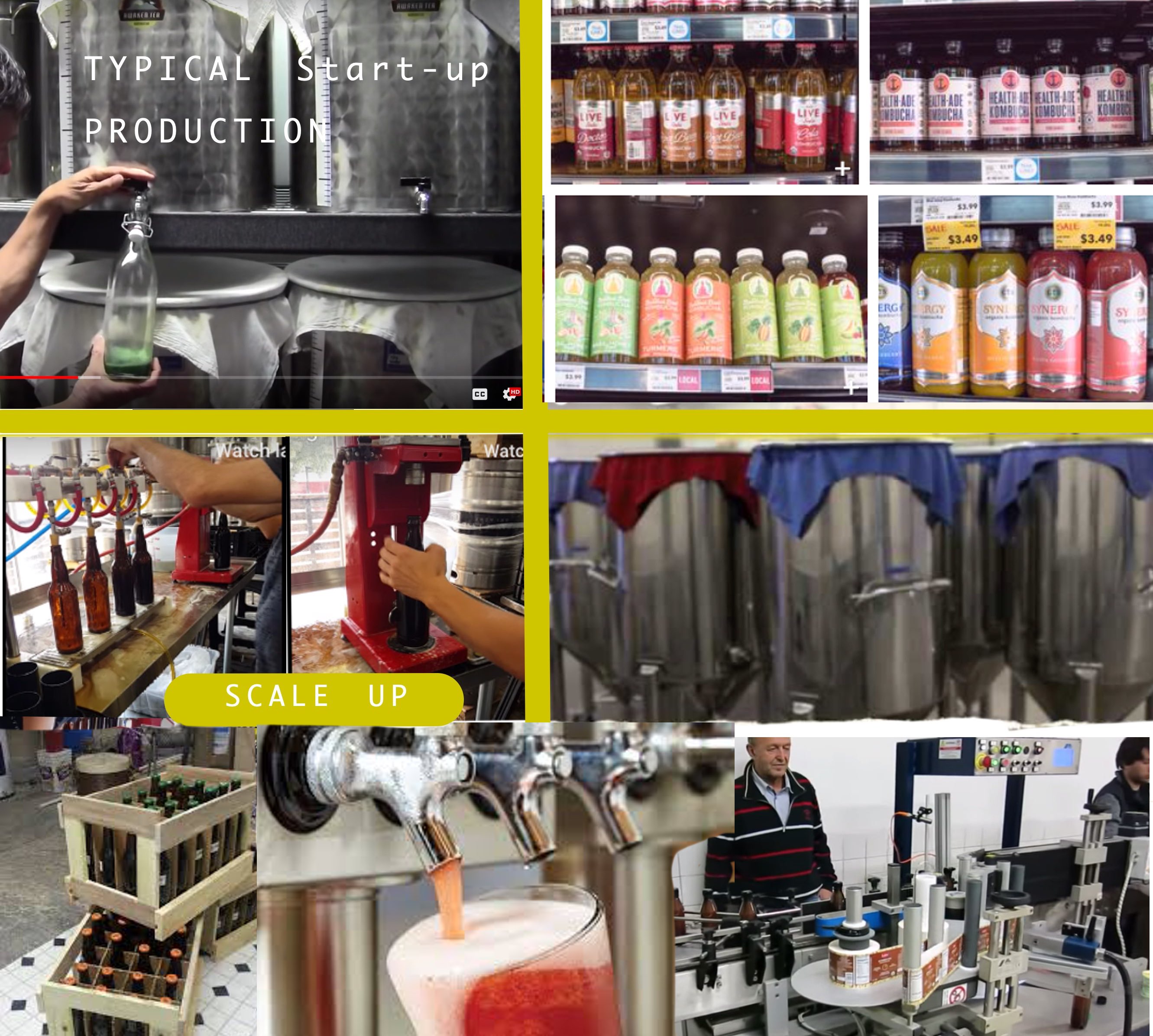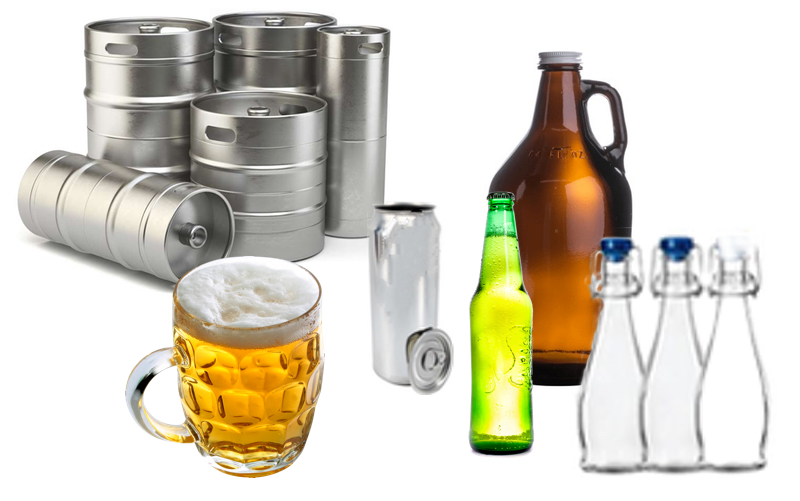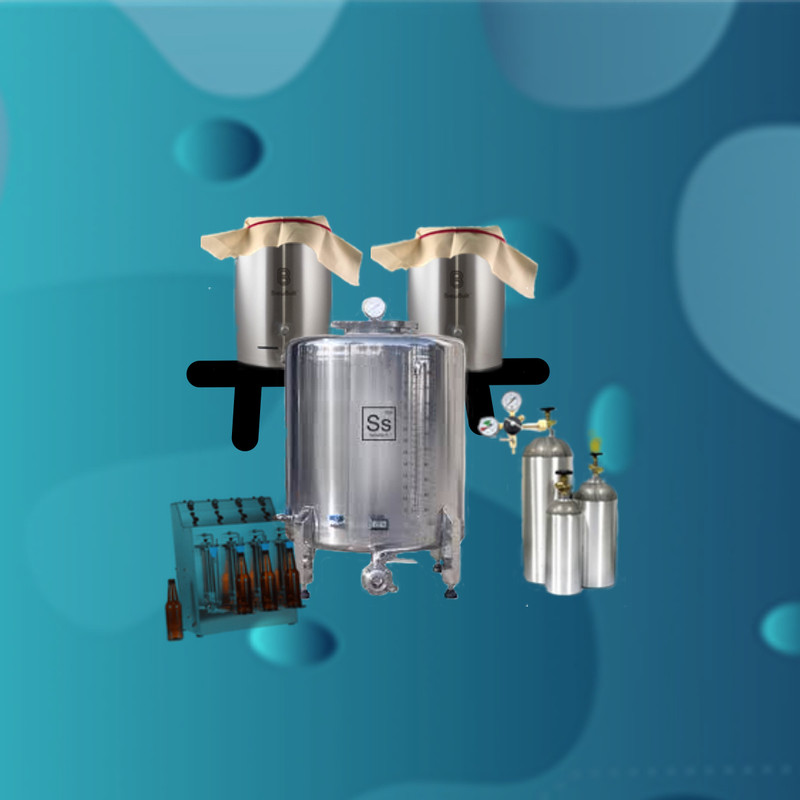Growing Pains?
Thinking of expanding?
Just need a little bit of help or advice?

HappyHerbalist brewing Kombucha since 1997
Free one-hour Consultation
Micro-Brewery Consulting. Cost estimates, Start-ups to Problem Solving
HappyHerbalist@me.com cell / text 919-518-3336
Micro-Brewery Consulting. Cost estimates, Start-ups to Problem Solving
HappyHerbalist@me.com cell / text 919-518-3336
First thing is to decide will you be Kombucha TEA or Kombucha BEER.?
The equipment is about the same, but the paperwork and fees are very different.
Beer and any product with 0.5% or higher ABV is controlled by the TTB
Juices and Kombucha Tea ,etc is controlled by the FDA and usually your local Agriculture Department
The zoning is also different, as is the distribution. Will talk more on the differences later.
Either way, the hardest part in the beginning is deciding how many bottles you will be selling? Bottles translate into cases, cases into barrels, barrels into fermenters. and everything into dollars
You may also want to consider other ferments besides Kombucha.
Often with the same equipment - such as making Ginger Beer , Probiotic Soda, or Cold Brew Coffee and Nitro Coffee which only takes 2 days to produce (and sell for as much as Kombucha Tea) . You would be capitalizing on your equipment usage. You may also want to consider co-packing for other local brewers thus allowing you to benefit from larger more productive and automated equipment that cuts your production time and costs as well as making some extra cash.
Each Kombucha Fermenter probably can do 36 batches per year. (average 10 day ferment) The number of different kombucha’s you offer can be decided later, but the total volume projected is the key.
note: each Kombucha Fermenter, during its “off-time” can be used to ferment Ginger Beer, Probiotic Soda, Cold-Brew Coffee, or Nitro-Coffee. Each non-used Kombucha Fermenter can do 180 batches per year. Next what is the size of your fermenter.?
Kombucha Micro Brewery
A Nano brewery is defined as brew house less than 3 BBL (barrels)
For cost factors, size and other concerns our projections are for a 6 Barrel semi-automated Brewery.
The following information is intended as a guide as to brew-house size and gross sales potential.
note that these values are only an illustration. all percentages will vary greatly upon a great many more variables.
Rough estimate of raw material will be your cheapest cost. ($0.07-$0.20 per bottle/can)
Equipment costs 3-6 Barrel semi-automated brew-house about $15,000 and up.
Supplies and distribution cost will be the greatest and reoccurring based on your business plan.
What size Brew-house do you need?
Kombucha Each BBL (31 gallon) fermenter doing 36 ferments per year ( 36 BBL) may average 10,000 - servings (12 oz ) of kombucha annually.
Probiotic Soda Each BBL (31 gallon) fermenter doing 180 ferments per year (180 BBL) may average 59,000 - servings of Probiotic Soda or Cold Brew Coffee annually.
Distribution is the second key. Where will you be selling your Kombucha? Farmers market, vendor carts, roadside stands, events, fair, stores, restaurants, pubs, brewhouse. taproom. Will your product (s) be in bottles, cans, kegs, barrels, or growlers. There are different costs associated with each.
Wholesaling, to stores the least profitable.
Store cold shelf space takes 30%
Distribution: 20-35%+.
Many states allow small brewers to self-distribute which can more than double your profitability. However distributors are often a needed connection to gain access to stores shelves and product placement. Plus they do pick up and deliver.
Kegging to pubs, restaurants, ~ 50% profit
Farmers Market, Street Vendors ~ 60%
Personal kegging to events _ ~ 75 % profit
Taproom, your own pub is the greatest return ~ 90%
Most do a combination and are always looking for more opportunities.
Costs
The more you sell, the more equipment you need. The more production, the more labor.
Initially most start-ups do everything by hand and do not count their hours - or pay themselves for their effort. This is a a bad practice. Even full automation a brew-house is labor intensive and a profitable business needs good labor. A brewer national average salary is under $30,000 and a brew-master just over $41,000. Day labor (4-5 people for 6-8 hours each week at $15 hour) about $30,000 annually. This is a typical 6 barrel weekly production full staff.
3 BBL Kombucha annually can produce 108 BBL or 35,640 servings annually. @ $3.00 = $106,920 Gross
6 BBL Kombucha annually can produce 216 BBL or < 71,200 servings annually. @ $3.00 = $213,600 Gross
Now if you dedicate 1 BBL to Ginger Beer, Probiotic Soda or Nitro-Coffee , which can sell at the same price;
5 BBL Kombucha (180 BBL) <59,400 servings = $178,200
1 BBL Probiotic Soda (180 BBL) <59,400 servings =$178,200
5 + 1 = Gross income $356,400
Labor
Full and part-time labor (as quoted above) $100,000
(you can count yourself as brew master $41,000)
Leaves $256,000 for expenses, supplies, books, taxes, utilities, rent
note: this is only an estimate to generate ideas on start ups, calculating maximum production with a serving price of $3.00.
There’s little difference in cost between a 3 and 6 BBL Kombucha Brewhouse. Labor starts getting more intense as production (kegging, bottling, canning, packaging delivery) increases.
Bottling .canning sales people will quote 300 units per hour for manual labor, but thats when all is running smoothly. And you also have prep time, washing, rinsing, labeling and stacking in cases. Then moving to storage and delivery. (all which should be cold). Semi-automatic is at least twice and full auto does that in a minute.
Each BBL from time of harvest to the cold room is about 3-4 hours of labor.
Above example for a 6 BBL brewhouse has 360 BBL annually for 180 - 8 hour days (post production)
Fermenting, Brewing, testing, checking, cleaning may be calculated as another 180 - 8 hour days
180+180 = 360 days a year 8 man hours per day just on the production side.
Nothing is easy when you do everything yourself.
Supply wise, using the above example of 360 BBL annually production / 118,800 servings, your business plan breaks it down into bottles, cans, growlers pints, kegs or on tap. From there you know how many per year to order and how much space you have to store. A Cold Room is highly recommended.
We can design and install a Kombucha Brew House to fit your budget. Starting at a basic $9,000 bare bones to a 6 BBL semi-automatic Kombucha Brew House typically runs $20,000 and a 9 BBL automatic (labor saving) Kombucha Brew House for about $49,000. Training, setup and Turn-Key operation is also available.
We are here to help. No charge for initial consultation.
don't forget to download our Free Kombucha Craft Brewing Guide..
text 919-518-3336


